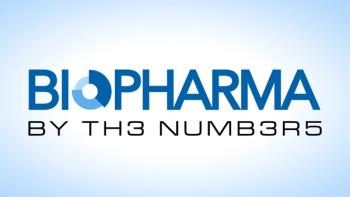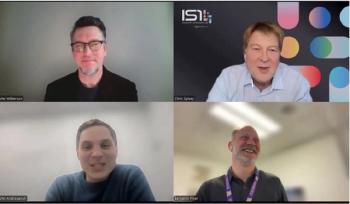
- BioPharm International-07-01-2018
- Volume 31
- Issue 7
Biosimilars Raise Manufacturing and Regulatory Challenges
FDA seeks more efficient testing to spur development of less costly biotech therapies.
A central strategy for enhancing access to more affordable medicines for the Trump administration, Congress, and FDA involves smoothing the pathway for the development and approval of high-quality biosimilars and interchangeable biotech therapies. Yet, only three biosimilars are on the market-of 11 approved products-eight years after enactment of legislation authorizing follow-ons. Recent entries include Pfizer’s Retracrit, the first approved alternative to Amgen’s widely used anemia treatment Epogen (epoetin alfa), and Fulphilia (Pegfilgrastim) from Mylan and Biocon, a competitor to Amgen’s Neulasta. But if current trends continue, it may be months or years before Americans gain access to these less costly therapies.
In the United States, biosimilars must overcome lengthy patent challenges and difficult reimbursement policies that block product marketing. Testing and production of biosimilars costs from $100 million to $250 million per program, much more than the $10 million involved in developing a conventional generic drug. Consequently, biosimilars come to market at prices only 15–20% below the innovator, which often is not enough difference to drive prescribing and industry investment in the field.
Manufacturing problems also continue to cause delays, as experienced by both
and
Streamlining development
At FDA, Commissioner Scott Gottlieb, MD, is encouraging biosimilar development with initiatives to provide greater scientific and regulatory clarity for sponsors, a more efficient review process, and tools for using modern analytical techniques to make biosimilar development more predictable and less costly. With more than 60 biosimilar development programs to 31 different reference products in the pipeline, the Center for Drug Evaluation and Research (CDER) is
FDA recently
Another concern for FDA is evidence that innovators may delay biosimilar testing by blocking access to supplies of reference products needed for comparability testing and clinical trials. FDA has published lists of brand drugs subject to such complaints from generic-drug makers and has its eye on restrictive contracting and distribution strategies that similarly may affect biosimilar sponsors and create barriers to the submission of biosimilar applications.
To encourage greater uptake of biosimilars, FDA also is doing more to educate clinicians and patients on product safety and efficacy and to address misconceptions that foster reluctance to prescribe and use these therapies. Biosimilar advocates are urging the agency to further explain its standards and policies to build public confidence that biosimilars are equally safe and effective as brand biologics. FDA recently
Added efficiencies may arise from establishing a global market for biosimilars, and FDA is collaborating with regulatory authorities in Europe, Japan, and Canada to harmonize R&D requirements and share experiences in overseeing biosimilars. Such partnerships can support global economies of scale in biosimilar development programs across national boundaries, Christl noted at the London conference. Regulatory authorities from the United Kingdom and other European countries reported millions in savings from the growing uptake of biosimilars to rituximab, infliximab, and etanercept, as prescribers gain more confidence in switching patients to the lower-cost therapies.
Rebate roadblocks
In the US, though, payment and rebate practices create additional barriers to biosimilar marketing and utilization. In a
The crux of the problem, Gottlieb explained, is the “rebate trap” that permits PBMs and insurers to profit from the spread between list price and the actual rebated price for an innovator therapy. Rebates can amount to hundreds of million of dollars in annual revenues for plans and typically are tied by manufacturers to volume or preferred formulary status. This system means that PBMs and plans lose substantial rebate revenues by shifting patients from an established drug to a biosimilar.
As biologics account for an increasingly large portion of drug outlays, Gottlieb urged payers and insurers to reject such rebate arrangements and to encourage biosimilar use by lifting prior authorization requirements for biosimilars, designing formularies with biosimilars as the default option for newly diagnosed patients, and waiving co-insurance on these products. Payers must decide if they want to continue to benefit from profitable rebates, Gottlieb told the insurers, or “help generate a vibrant biosimilar market that can help reset biologic pricing.”
These rebate and contracting issues that stymie biosimilar competition, along with a range of patent, regulatory, and reimbursement challenges, are discussed in a
References
1. Pfizer, “Pfizer Provides Update on Proposed Epoetin Alfa Biosimilar,”
, June 22, 2017.
2. Mylan, “US FDA Approves Mylan and Biocon’s Fulphila™ (pegfilgrastim-jmdb), the First Biosimilar to Neulasta®,”
3. Celltrion, “Celltrion Completes Resubmission for Biosimilar Candidate to FDA for Review,”
4. FDA, Biosimilars,
5. L. Christl, PhD, “U
6. FDA,
7. FDA, FDA Video Series about Biosimilar and Interchangeable Products,
8. FDA, Capturing the Benefits for Competition for Patients,
9. FDA, Advancing Patient Crae Through Competition,
10. The Biosimilars Council, “
Article Details
BioPharm International
Vol. 31, No. 7
July 2018
Pages: 44–46
Citation
When referring to this article, please cite it as J. Wechsler, "Biosimilars Raise Manufacturing and Regulatory Challenges," BioPharm International 31 (7) 2018.
Articles in this issue
over 7 years ago
Seeking Regulatory Adviceover 7 years ago
Be Quick, But Don’t Hurryover 7 years ago
Biopharma Seeks Balanceover 7 years ago
Industry 4.0 in Biopharmaceutical Manufacturingover 7 years ago
Advances in Analytics for Bioprocessingover 7 years ago
A Look into the Future of Biopharmaceutical Qualityover 7 years ago
Regulating Biologicsover 7 years ago
The Challenge of Disruptive Technologies in Bioprocessingover 7 years ago
Optimizing Late-Stage and Commercial Cell-Culture ProcessesNewsletter
Stay at the forefront of biopharmaceutical innovation—subscribe to BioPharm International for expert insights on drug development, manufacturing, compliance, and more.





